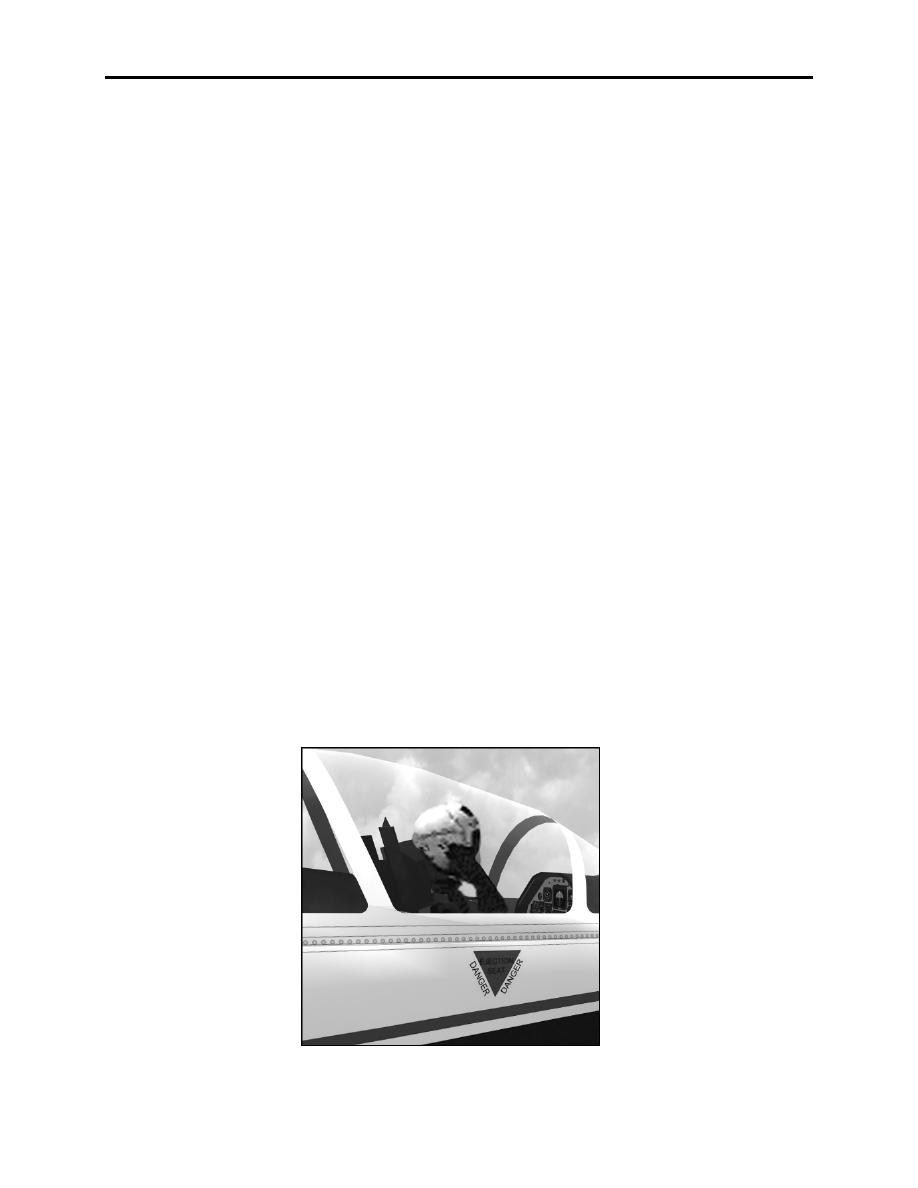 |
|||
|
|
|||
|
Page Title:
Figure 1-4 Introductory Signal for Radio Frequency Change |
|
||
| ||||||||||
|
|  T-6A FORMATION
CHAPTER ONE
monitoring engine instruments and calling out airspeeds. Another example of in-flight
application of this concept can be found in Section 407, Tail Chase Exercise. These are just a
few quick simple examples to introduce the crew coordination your instructor may discuss and
expect during the formation phase.
4. The Flight Leader. Flights of two or more aircraft shall be under the command of a flight
Lead. Although the flight Lead may not always be the actual formation Lead, he is always
responsible for all matters pertinent to the safe and orderly conduct of flight.
105. RADIO CHANNEL CHANGE
The flight will essentially use two call signs: An official call sign depicted on the flight schedule
and used to communicate with outside agencies (i.e., ATC, Base, etc.) and a tactical call sign,
selected by the flight for inter-flight communications. Students are encouraged to have a tactical
call sign selected for the flight prior to the brief (i.e., "Slinky").
Flight flexibility and integrity require that all flight members accomplish frequency changes,
when necessary, simultaneously. There are two methods to execute a frequency change. One is
through the use of visual signals and the other is to broadcast the change over the Ultra High
Frequency (UHF)/Very High Frequency (VHF). Sometimes, frequencies are automatically
changed at specific times in the flight or on the ground. These situations should be covered in
the brief.
1. Visual Radio Change: The Lead will initiate the frequency change through the use of a
visual signal only when the flight is in a "stable" condition and the Wingman is in the parade
position enabling him to see the Lead's signal. The visual signal can be used both on the deck
and airborne. Lead will direct preset channel changes by tapping his ear nearest the Wingman
(Figure 1-4) and then holding up the appropriate number of fingers (Figure 1-5). Manual
frequency changes will be given by tapping the ear nearest the Wingman, giving the manual
frequency signal and then signal the appropriate frequency with hand signals. The Wingman will
indicate he has received the signal with a head nod or a "thumbs-up".
Figure 1-4 Introductory Signal for Radio Frequency Change
INTRODUCTION TO FORMATION 1-5
|
|
Privacy Statement - Press Release - Copyright Information. - Contact Us |